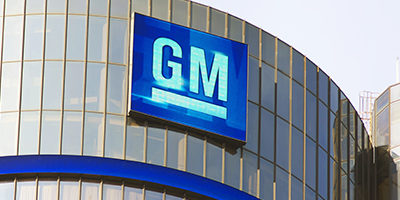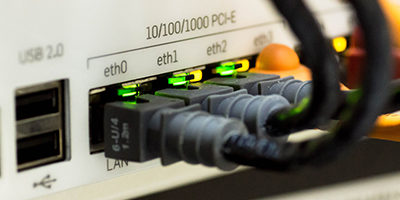%
Jubak’s Picks Performance 1997-2019
Jubak’s Picks
Buy and hold? Not really.
Short-term trading?
Not by a long shot.
So what is the stock-picking style of The Jubak’s Picks portfolio?
Click to expand...
Click to View the Jubak’s Picks Portfolio
I try to go with the market’s momentum when the trend is strong and the risk isn’t too high, and I go against the herd when the bulls have turned piggy and the bears have lost all perspective. What are the results of this moderately active — the holding period is 12 to 18 months — all-stock portfolio since inception in May 1997? A total return of 584% as of December 31, 2019. That compares to a total return on the S&P 500 stock index of 335% during the same period.
%
Top 50 Stocks Performance 2019
Top 50 Stocks
This long-term, buy-and-holdish portfolio was originally based on my 2008 book The Jubak Picks.
Trends that are strong enough, global enough, and long-lasting enough to surpass stock market averages.
Click to expand...
Click to view the Top 50 Stocks Portfolio
In The Jubak’s Picks Portfolio I identified ten trends that were strong enough, global enough, and long-lasting enough to give anyone who invested in them a good chance of beating the stock market averages.
To mark the publication of my new book on volatility, Juggling with Knives, and to bring the existing long-term picks portfolio into line with what I learned in writing that book and my best new ideas on how to invest for the long-term in a period of high volatility, I’m completely overhauling the existing Top 50 Picks portfolio.
You can buy Juggling with Knives at bit.ly/jugglingwithknives
%
Dividend Income Performance 2021
Dividend Income
Every income investor needs a healthy dose of dividend stocks.
Why bother?
Why not just concentrate on bonds or CDs?
Click to expand...
Click to view the Dividend Income Portfolio
Because all the different income-producing assets available to income investors have characteristics that make them suited to one market and not another. You need all of these types of assets if you’re going to generate maximum income with minimum risk as the market twists and turns.
For example: bonds are great when interest rates are falling. Buy early in that kind of market and you can just sit back and collect that initial high yield as well as the capital gains that are generated as the bonds appreciate in price with each drop in interest rates.
CDs, on the other hand, are a great way to lock in a yield with almost absolute safety when you’d like to avoid the risk of having to reinvest in an uncertain market or when interest rates are crashing.
Dividend stocks have one very special characteristic that sets them apart from bonds and CDs: companies raise dividends over time. Some companies raise them significantly from one quarter or year to the next. That makes a dividend-paying stock one of the best sources of income when interest rates start to rise.
Bonds will get killed in that environment because bond prices will fall so that yields on existing bonds keep pace with rising interest rates.
But because interest rates usually go up during periods when the economy is cooking, there’s a very good chance that the company you own will be seeing rising profits. And that it will raise its dividend payout to share some of that with shareholders.
With a dividend stock you’ve got a chance that the yield you’re collecting will keep up with rising market interest rates.
But wouldn’t ya know it?
Just when dividend investing is getting to be more important—becoming in my opinion the key stock market strategy for the current market environment—it’s also getting to be more difficult to execute with shifting tax rates and special dividends distorting the reported yield on many stocks.
I think there’s really only one real choice—investors have to pull up their socks and work even harder at their dividend investing strategy. That’s why I revamped the format of the Dividend Income portfolio that I’ve been running since October 2009. The changes aren’t to the basic strategy. That’s worked well, I think, and I’ll give you some numbers later on so you can judge for yourself. No, the changes are designed to do two things: First, to let you and me track the performance of the portfolio more comprehensively and more easily compare it to the performance turned in by other strategies, and second, to generate a bigger and more frequent roster of dividend picks so that readers, especially readers who suddenly have a need to put more money to work in a dividend strategy, have more dividend choices to work with.
Why is dividend investing so important in this environment? I’ve laid out the reasons elsewhere but let me recapitulate here. Volatility will create repeated opportunities to capture yields of 5%–the “new normal” and “paranormal” target rate of return–or more as stock prices fall in the latest panic. By using that 5% dividend yield as a target for buys (and sells) dividend investors will avoid the worst of buying high (yields won’t justify the buy) and selling low (yields will argue that this is a time to buy.) And unlike bond payouts, which are fixed by coupon, stock dividends can rise with time, giving investors some protection against inflation.
The challenge in dividend investing during this period is using dividend yield as a guide to buying and selling without becoming totally and exclusively focused on yield. What continues to matter most is total return. A 5% yield can get wiped out very easily by a relatively small drop in share price.
Going forward, I will continue to report on the cash thrown off by the portfolio—since I recognize that many investors are looking for ways to increase their current cash incomes. But I’m also going to report the total return on the portfolio—so you can compare this performance to other alternatives—and I’m going to assume that an investor will reinvest the cash from these dividend stocks back into other dividend stocks. That will give the portfolio—and investors who follow it—the advantage of compounding over time, one of the biggest strengths in any dividend income strategy.
What are some of the numbers on this portfolio? $29,477 in dividends received from October 2009 through December 31, 2013. On the original $100,000 investment in October 2009 that comes to a 29.5% payout on that initial investment over a period of 39 months. That’s a compound annual growth rate of 8.27%.
And since we care about total return, how about capital gains or losses from the portfolio? The total equity price value of the portfolio came to $119,958 on December 31, 2012. That’s a gain of $19,958 over 39 months on that initial $100,000 investment or a compound annual growth rate of 5.76%.
The total return on the portfolio for that period comes to $49,435 or a compound annual growth rate of 13.2%.
How does that compare to the total return on the Standard & Poor’s 500 Stock Index for that 39-month period? In that period $100,000 invested in the S&P 500 would have grown to $141,468 with price appreciation and dividends included.) That’s a total compounded annual rate of return of 11.26%.
That’s an annual 2 percentage point advantage to my Dividend Income portfolio. That’s significant, I’d argue, in the context of a low risk strategy.
Portfolio Related Posts
Wednesday copper price played a little catch up with copper stocks
Copper stocks have been moving steadily higher recently in anticipation of a turn in the eight week downward trend in the price of copper itself. Now the price of copper is showing some of the upward movement that the rally in copper stocks anticipated.
Take that Ford: GM will boost spending on electric and autonomous vehicles by 30% through 2025
General Motors (GM) will boost global spending on electric and autonomous vehicles to $35 billion through 2025. That’s a 30% jump over its last spending plan, Reuters reported today.
Buying Cyber Security stock CrowdStrike in my Jubak Picks and Millennial portfolios
I posted Friday, June 11, that investors looking for a theme to buy in an expensive market had turned to Cyber Security stocks. Makes sense, I noted, with ransomware attacks running at a fast pace and forecast pointing to even more attacks on corporate and government systems in the months (years?) ahead. I wrote that in this sector I already owned Palo Alto Networks in my Jubak Picks Portfolio where the stock is up 79% since I added this position on June 27, 2019, and in my 50 Stocks Portfolio where it is up 50% since I added this position on January 21, 2020, and in my new Millennial Portfolio where the position is up 0.94% since I added it on May 21, 2021. And that I would be adding another Cyber Security stock, CrowdStrike Holdings, to my Jubak Picks and Millennial portfolios on Monday, June 14
Investors see a theme to buy in CyberSecurity stocks today
Investors looking for a theme to buy in an expensive market where the Standard & Poor’s 500 hit a new all-time high yesterday today, June 11, looked to Cyber Security stocks. And why not with the newest round of ransomware attacks clearly not the last effort by hackers to break into corporate networks.
Adding Ford to my Jubak Picks Portfolio
Today I made Ford (F) my fifth pick for a falling market in my Special Report: Five Picks and Five Hedges for a Falling Market on my JubakAM.com subscription site. Some of the logic of that pick is laid in n more detail in the Special Report. With momentum stocks showing signs of flagging, I think adding more value stocks or special situations with very specific growth “events” set to trigger a cascade of good news is indicated. In the case of Ford the company is building good momentum on its introduction of popular electric vehicles such as an electric Mustang and an electric F150 pickup truck.
Selling VanEck Vectors Low Carbon Energy ETF out of my Jubak Picks Portfolio on June 3
I don’t think 2021 is going to be an especially good year for Tesla and it will be tough across the auto industry. That means, if I’m right, that this ETF’s heavy exposure to Tesla (and to Nio) is going to be a drag on what I see as a likely recovery in the wind power stocks Iberdrola, Orsted, and Vestas Wind Systems that all are top 10 portfolio holdings in the ETF. I’d rather play any wind power rally through these stocks–I own Orsted (DNNGY) and Vestas (VWDRY) in my Jubak Picks Portfolio–than though this ETF with its drag from Tesla in 2021. I will sell the VanEck Vectors Low Carbon Energy ETF out of my Jubak Picks Portfolio tomorrow June 3.
I’m selling Kinder Morgan out of my Dividend Portfolio
Like many oil-related stocks Kinder Morgan (KMI), the operator of 70,000 miles of natural gas pipelines, has moved up strongly during the recent rally in the price of oil. The stock, a member of my Dividend Portfolio since February 24, 2016, has gained 38.13% in 2021 to date as of the May 26 close. The stock has gained 26.67% in the last three months and 10.11% in the last month. The dividend, which produces a yield of 5.89% isn’t in danger. And I’m not selling because I’m worried about that potential. But growth at Kinder Morgan depends on the company’s ability to buy or build new pipeline capacity and earn a high rate of return on that investment.
Sell Equinor after oil recovery and dividend date
Oil prices have bounced back big time and with them the prices on oil stocks. I still think the long-term trend is against oil producers as efforts to combat global warming lead to lower consumption of fossil fuels. And I’d prefer not to own any oil and natural gas shares–even in as “progressive” a company as Equinor. I’m going to take advantage of the rally in oil prices to sell these shares out of my Jubak Picks Portfolio with a small 0.9% gain since I established that position in May 2012.











